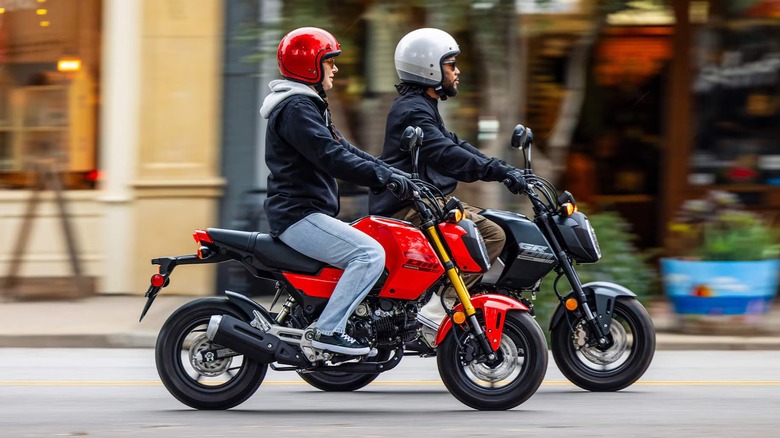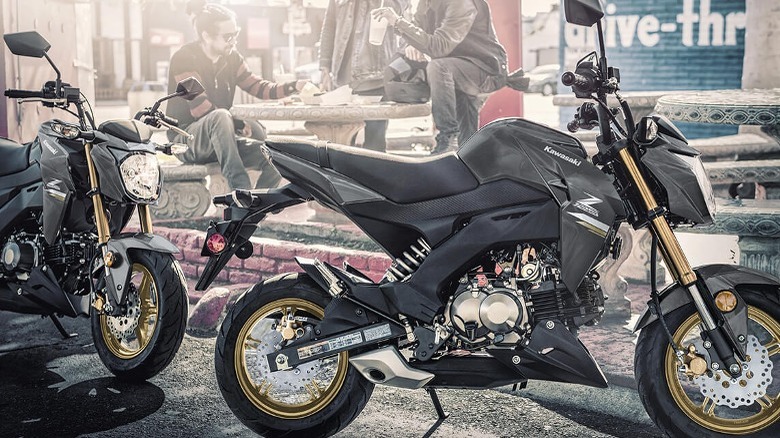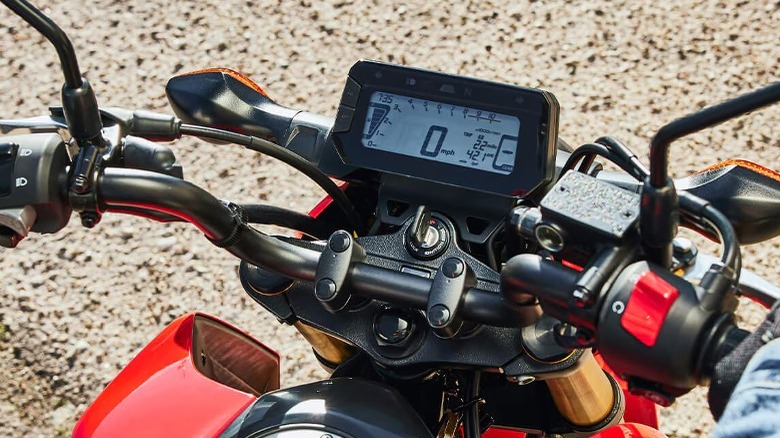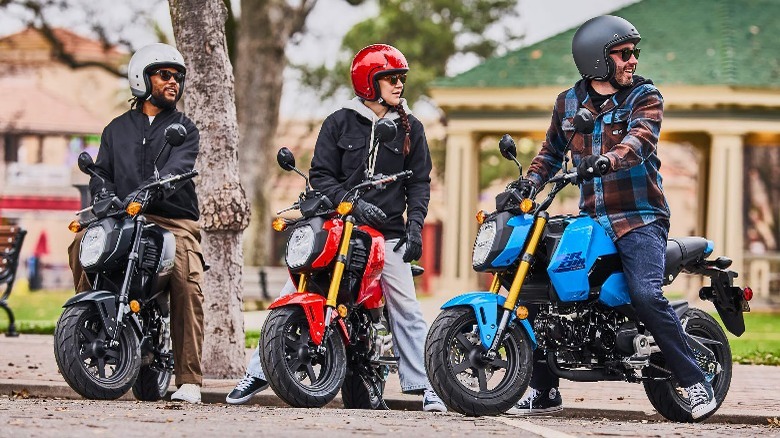Kawasaki Z125 Pro Vs. Honda Grom: What's The Difference Between These Bikes?
Small-engine motorcycles have been growing in popularity in recent years. Sure, there are still plenty of riders out there who still want as much engine as they can get their hands on, but there is an ever-increasing number of riders who are more interested in the value, economy, and simple fun that comes with riding a smaller bike. One of the areas that seems to have grown the most is the 125cc engine class. These bikes aren't particularly fast when compared to most bigger motorcycles, but there are several of them that offer just enough basic street performance that you can take them just about anywhere–except perhaps certain stretches of highway.
There are a lot of cool-looking 125cc motorcycles, but two of the most popular models are considered to be on the more performance-minded side of the spectrum. The Kawasaki Z125 Pro and the Honda Grom both make regular appearances on the best motorcycle lists in this category, and they actually have a lot in common. Anyone could tell at a glance that they're designed to fit a similar niche.
So, what separates these bikes aside from their manufacturers? To fully understand the differences between the Kawasaki Z125 Pro and the Honda Grom, it's best to look at four qualities: design, performance, features, and price.
Design
The Z125 and the Grom are very similar to look at. They are both naked street bikes that are relatively small in stature, but have an aggressive, performance-focused aesthetic. These bikes are designed to be mini road warriors that are fun to ride while also having enough power and maneuverability to easily tackle urban roads.
The Honda Grom was established before Kawasaki decided to edge its way into this particular space. It first launched in 2014 and has changed very little over the last decade. The 2024 Grom is 69.2-inches long, 28.6-inches wide, 40-inches tall, and has a 30.0 inch seat height. The bike has a 1.6 -gallon fuel tank, and weighs 224 lbs., or 227 lbs. if you get the version that comes with ABS. The light weight and low seat height make it a particularly appealing choice for shorter riders and those who prefer a bike that's easy to maneuver.
It's clear that Kawasaki followed the Grom's lead in the construction of the Z125 Pro. The company was already offering a sporty 125cc Ninja, but the Z125 Pro didn't launch until 2016, a couple years after the Grom had established the demand for small naked street bikes. The current, 2024 Z125 is 66.9-inches long, 29.5-inches wide, 39.6-inches tall, and has a 31.7 inch seat height. So the seat is just under 2 inches taller, which may affect the comfort of some riders, but other differences in the bikes' dimensions are negligible. It's also almost exactly the same weight, coming in at 224.8 lbs. The biggest advantage of the Kawasaki is it's fuel capacity, which sits at a full two gallons.
Performance
Now, let's get down to brass tacks and take a look at the engines that power each of these motorcycles and what kind of performance you should be able to expect from them. Keep in mind that they're both smaller bikes, so you won't be winning any drag races, and even highway travel is probably going to be a little iffy.
The Grom runs a 123.9cc SOHC, air-cooled four-stroke single cylinder, 2-valve engine. This has a 50.0mm bore, a 63.1mm stroke, and a 10.0:1 compression ratio. It can get up to 9.7 horsepower at 7,000 rpm and up to 7.7 lb-ft of torque at 5,500 rpm. The top speed of a Honda Grom is supposed to be 55 mph, but some reviewers have reported being able to squeeze a little more juice out of it. According to Cycle World, "On level ground, with an average-sized rider on board, the Grom will hit around 60 mph."
The Z125 Pro is powered by a 125cc 4-stroke, single cylinder, SOHC, 2-valve, air-cooled engine. It has a 56.0mm bore, a 50.6mm stroke, and a 9.8:1 compression ratio. It can put out 8.3 horsepower and 7.1 lb-ft of torque at 6,000 rpm. According to MCN, the Z125 Pro can achieve an indicated 72 mph with some effort — giving it a higher top speed in spite of the lower power and torque.
Features
The Grom's suspension consists of 31mm telescopic inverted forks with 4.3 inches of travel in the front, while at the rear is a single shock with box-section steel swingarm that has 4.1 inches of travel. This combo gives the bike some sporty control on the front end while also adding some shock absorption for choppier conditions. The Grom is also fuel injected, has a manual 5-speed transmission, and a multiplate wet clutch.
As for the Z125 Pro, it has telescopic forks with 3.9 inches of travel in the front, and a single shock swing arm with 4.1 inches of travel in the back. This is similar to the Grom, so riders should expect similar handling. Likewise, it also has slick, street-ready tires that aren't made to leave the pavement. It has fuel injection and a manual 4-speed transmission. One feature that the Z125 Pro boasts that the Grom doesn't is a smart regulator. This is designed to maintain the voltage produced to by the bike's generator, allowing it to charge at idling speed, and shutting down the regulator when the battery is full or the rider demands greater performance.
Price
Finally, those who are interested in actually purchasing either a Honda Grom or a Kawasaki Z125 Pro will want to know how much each of these motorcycles is going to cost them. The 2024 Grom has an MSRP of $3,599 for the base model, $3,699 for the SP, and $3,799 for the ABS. This is a very affordable starting point for any new motorcycle. You don't have to buy new though. These bikes aren't particularly hard to find on the used market if you want to save even more cash in exchange for getting a bike that already has a few miles on it.
The Z125 Pro is pretty affordable as well. It starts at $3,649, placing it in the same price bracket as the Grom. There are also quite a few used Z125 Pros available if you have the patience to look, and it seems that most of them are priced a few hundred dollars cheaper than similar Honda counterparts. This suggests that used Z125 Pro models will be easier to find at a good price than Groms, but also that new models will be less likely to retain their value.




